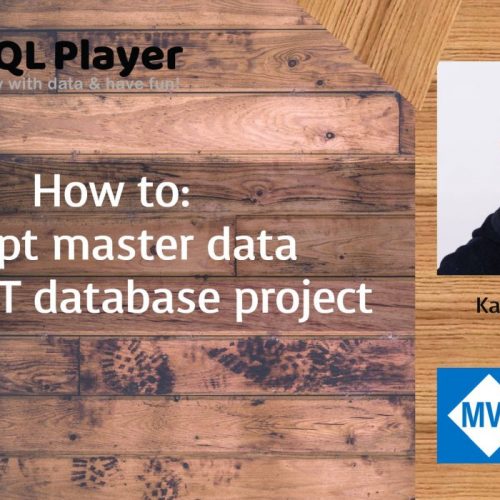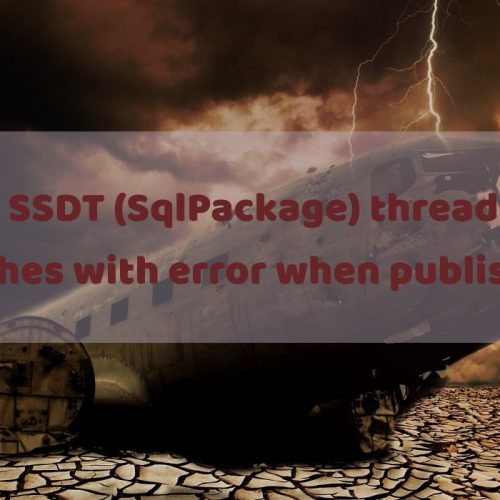SSDT
Database projects with SQL Server Data Tools (SSDT)
Last Year (2021) I released a full and comprehensive course about SSDT: developing and maintenance SQL Server database within SQL Server Data Tools in Visual Studio. Thank you to all
SSDT: Scripting static data from SQL Server (video)
Out of the box, SSDT covers objects on a database level, like tables, stored procedures, views, functions, etc. That means schema only. In many cases, there is a need to
Deployment of Microsoft SQL database with Azure DevOps
Hello, data folks! I have published several articles about databases and their maintenance in SSDT project on the blog. One of the posts explained step by step how to import
Script and deploy the data for database from SSDT project
This post is a part of the series about SSDT and database project leveraging Visual Studio. We already know that SSDT can cover all objects but only on a database
SSDT (SqlPackage) thread crashes with error when publishing
In this post, I will show you one of the scenarios when SSDT (SQL Server Data Tools) can fail unexpectedly while publishing database project to target server or preparation of
Tokenization of database project in SSDT
SSDT project has something we call Variables. On the Internet (posts, forums) they also are known as placeholders or tokens, especially when talking in a deployment/CI/CD/DevOps context. Variables can be found for
How to create DACPAC file?
In this post, I will explain what the DACPAC is and how to create it. In the previous post in DevOps series, I described how to create a new, empty
New DB project with SSDT and import existing database
With this episode I would like to commence long-awaited new series It’s about DevOps with databases. I’ll start with SSDT, but not exclude other tools (like Redgate ReadyRoll) in the
#TSQL2sDay – How SQLPackage.exe can spoil your deployment
Today, I’d like to describe briefly one thing with SQLPackage.exe. I know… It’s not precisely related to PowerShell (this week topic), but… you can use PowerShell to run it (and













